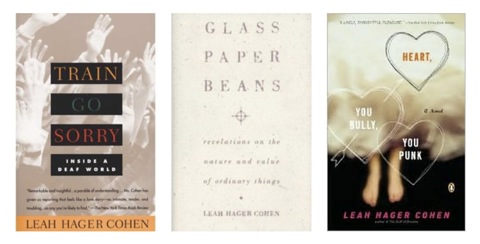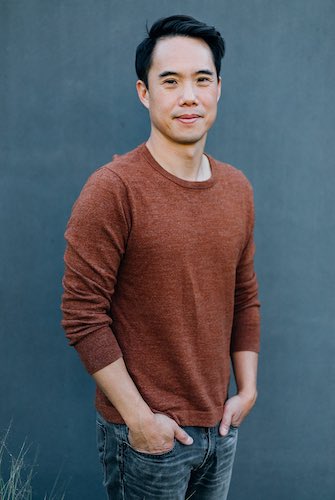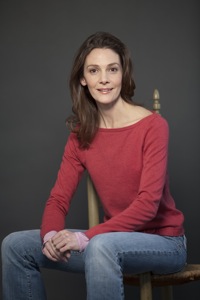 Seven years ago, when my wife was pregnant with our first child, I met a woman who had given birth to a severely malformed daughter who lived for only nine days. We hadn’t seen our child in an ultrasound yet, as this woman had seen hers, and we hoped to not share her experiences. After her ultrasound, doctors recommended that she abort the child, which had no chance of surviving. But she wanted to give birth to it.
Seven years ago, when my wife was pregnant with our first child, I met a woman who had given birth to a severely malformed daughter who lived for only nine days. We hadn’t seen our child in an ultrasound yet, as this woman had seen hers, and we hoped to not share her experiences. After her ultrasound, doctors recommended that she abort the child, which had no chance of surviving. But she wanted to give birth to it.
“It’s not my job to decide who comes into this world and who doesn’t,” she said. It struck me as an intensely humble decision on her part, and I’ve always remembered it. So it felt like deja vu (in the best way) when I read Leah Hager Cohen’s The Grief of Others (Riverhead, 2010), which centers on a similar event and its aftermath within the Ryrie family in the suburbs of New York City. Ricky, mother of two and hard-shelled financial analyst, knows that the child in her womb has anencephaly—a neurological defect in which the brain and skull are undeveloped—but gives birth to him anyway, despite not having told anyone in the family about the coming tragedy of his short life. Simon Ryrie lives for only fifty-seven hours, all of them in his mother’s arms, and Cohen weaves a moving family history out of the reverberations (and preverberations) of this event.
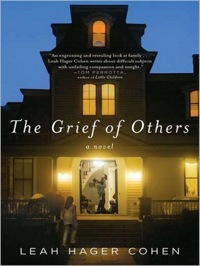 Like most families in literature, the Ryries are a mess, and Simon’s brief life only intensifies their tensions and their personal rudderlessness. Ricky’s scenic designer husband John has a twenty-something daughter from a previous relationship, and for all his jovial “fuzziness” he is as lost from his family as she is. Their high schooler Paul has gone from popular kid to outcast, and their adolescent daughter Biscuit has become obsessed with mourning rituals. Moving back and forth in time, Cohen gives us characters who are raw but beautiful, who move through the pathways they have made in life but always keep looking for other pathways that could lead to another self they might have been, or might still become.
Like most families in literature, the Ryries are a mess, and Simon’s brief life only intensifies their tensions and their personal rudderlessness. Ricky’s scenic designer husband John has a twenty-something daughter from a previous relationship, and for all his jovial “fuzziness” he is as lost from his family as she is. Their high schooler Paul has gone from popular kid to outcast, and their adolescent daughter Biscuit has become obsessed with mourning rituals. Moving back and forth in time, Cohen gives us characters who are raw but beautiful, who move through the pathways they have made in life but always keep looking for other pathways that could lead to another self they might have been, or might still become.
Throughout her writing career—which dates back to her 1994 nonfiction book Train Go Sorry: Inside a Deaf World, about a Manhattan school for the deaf where her father worked—Cohen has naturally been drawn to the dynamics of communities outside the public eye, or living in eddies where they might easily escape notice. The 2004 novel Heart, You Bully, You Punk explores the life of a teenage math whiz, her father, and her math teacher. For Glass, Paper, Beans (1998), she shadowed a Nova Scotia lumberjack, a quality controller at an Ohio glass factory, and a Mexican coffee grower, and combined that reportage with far-reaching observations about the nature of everyday commodities we use without thinking.
Cohen is intensely curious about the world, and especially gifted at finding small, ornate microcosms that show us how people view their own humanity, and The Grief of Others continues that aesthetic program. As a book of personal deja vu for me, it paid off immensely; I left it feeling that I understood the woman I’d met who wanted to have her baby, even though she knew it would die, far more intimately than I had before. But I also grew to understand—and this is a credit to Cohen’s art—those people who could not square themselves with the complicated decision to give birth to something so ephemeral.
Leah Hager Cohen is currently the W.H. Jenks Chair in Contemporary American Letters at the College of the Holy Cross, where she teaches fiction, nonfiction, and intriguing courses of her own design. She also teaches in the Low-Residency MFA Program in Creative Writing at Lesley University and contributes frequently to The New York Times Book Review.
Interview:
Steven Wingate: What struck me most about the book is how aware your characters are that each individual moment in their lives is full of portent—that every single decision defines who they are, and that life is a continuous moment of truth with no “time outs.” I’m thinking in particular of Ricky as she calculates how she can drive off of the Tappan Zee Bridge leading out of Tarrytown, but this boiling down of life to moments like this happens throughout the novel. What leads you to such moments and how do they come to you on the page?
Leah Hager Cohen: Oh dear, the very first question and I’m afraid I have no good answer. I suppose you are talking about a certain kind of acuity and attunement, a sharp awareness of the moment as it is being lived? It’s difficult for me to address how this happens, since it isn’t something I’ve consciously cultivated. It’s simply how I have always experienced life. Back in adolescence, I remember having an epiphany that the whole idea of hyperbole is fallacious—since nothing we perceive, nor any words we are capable of using to express it, could ever begin to approach the fullness of the thing.
In a short essay attached to the review copies of The Grief of Others, you talk about your own miscarriage and how it played into writing the book. Yet the book doesn’t feel fully (or even predominantly) autobiographical; the narration follows a lot of people in various different directions, and it’s ultimately about the Ryries as a unit. Did you always conceive it this way, or did that focus on the collective build over time?
![The girl and the railroad crossing [revisited]](http://farm5.staticflickr.com/4120/4765007026_e61fd2dd31.jpg)
I began with the character of Biscuit. It was her and her alone, to start: a ten-year-old girl riding her bike to Hook Mountain with a pocketful of chicken bones and fireplace ashes. Who was this kid? What was she doing, and why, and what was going to happen next? In my effort to understand her whole, round story, I was led to the other characters. But very early on the book suggested itself as an ensemble piece. In fact, in an earlier draft it was even more of an ensemble, because Baptiste and his Grann were more major characters.
You’re right that the book is not particularly autobiographical, other than the setting, for I did spend a large part of my childhood in Nyack. But the characters were mysterious to me, and a large part of what drove me to write the book was a desire to understand each one as fully as I could.
Ricky stands at the center of the Ryrie family and the clearest center of the novel, since her personal decisions drive so much of the action. She comes across to me as a thorny character: cold, willfully deceiving, loath to reach beyond the confines of herself into generosity and love. What went into the creation of her character, and how did it feel writing her?
I don’t see Ricky as you describe her. I see her as hurting, and in her pain she does act sometimes ignobly. But in a way she is more honest than John, her husband. While he makes an effort to pretend all is well, she cannot summon the will to do so, and her evident sadness, her subdued withdrawal, express more accurately than his joviality that something is seriously amiss within their marriage.
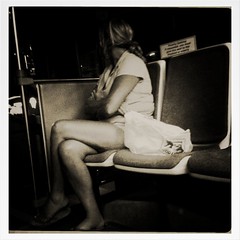 I also have sympathy with her difficult position: almost from the beginning of their relationship, it has been a given that John occupies a kind of moral high ground to Ricky’s low ground. In families as well as in relationships, we often unwittingly assign people roles that then circumscribe our ability to see them fully, in all their nuanced complexity. Part of Ricky’s grief and rage come from this long-standing, unacknowledged perception that has ill-served her and her husband both.
I also have sympathy with her difficult position: almost from the beginning of their relationship, it has been a given that John occupies a kind of moral high ground to Ricky’s low ground. In families as well as in relationships, we often unwittingly assign people roles that then circumscribe our ability to see them fully, in all their nuanced complexity. Part of Ricky’s grief and rage come from this long-standing, unacknowledged perception that has ill-served her and her husband both.
That said, it was challenging to write Ricky, because she is fairly defended and emotionally somewhat unsophisticated; she’s still stuck in that little girl self who needs to ask her father, “Am I good?” We all have our limitations, but Ricky may be particularly limited in her ability to realize her limitations. In this sense, I had to open my heart very wide to feel I could first grasp and then convey who she is.
The adolescent Biscuit is obsessed with ritual—she throws those chicken bones and ashes in a river, steals a library book about mourning customs worldwide, etc. She knows that her family needs mourning and ritual more than anything else, so within the book she functions as a soothsayer. This in turn lends a metaphorical layer to her character, a position from which the reader can see contemporary American society. What was it like to work with Biscuit? And are we, from the perspective she allows, a society that has lost its rituals?
You may be right in noticing ways in which Biscuit operates to an extent as soothsayer, but I never related to her as anything but a specific individual. I think if I’d set out to write her as a metaphor, I would’ve landed flat on my face. Working with her was pretty delightful, especially in the section of the book when she is two years old, with her pacifier and her diapers and her limited language skills, all regal toddlerish obstinacy and idiosyncracy. She cracked me up.
As for societal rituals, certainly they have changed; at the very least, 21st-century rituals incorporate new ways of relating to technology, virtuality, globalism, temporal and geographic boundaries, spirituality and mortality. And yes, I think that as a society we probably do have fewer shared rituals, in part because as a society we are increasingly less homogenous. So this may be more gain than loss.
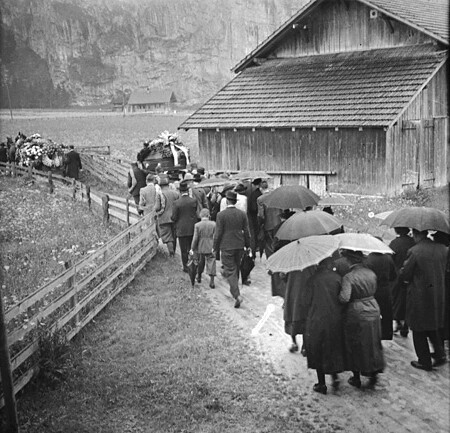
You break the fourth wall at the end of the novel by asking the reader “what more is there to tell?” It’s not something we normally see in fiction, so I’m curious about why you made that choice. Was it a spontaneous decision for you, or something you knew was coming down the pike from the early phases of the novel?
As I neared the end of the book, I began to fret, because I was having a hard time seeing my way clear to what that ending should be. This was at a point where, with other books, the ending would have already made itself clear to me. Then all at once I saw how it should end, but I went into a new sort of fretting, because what I saw seemed so radical and rule-breaking, at least for me, as a writer of realistic fiction, not meta- or experimental fiction. In the end, though, it felt so absolutely right that I followed my impulse.
When my agent sent the book out to editors, it was interesting to see how many of them said they loved the book, but might I consider changing the ending? vs. those who loved the book with the ending as it was. I think it was about fifty-fifty.
You have a Columbia University graduate degree in Journalism, and that journalistic training shows up clearly in your nonfiction books. Do you feel it come into play with your fiction? If so, is that influence consistent across your novels, or did it differ for The Grief of Others?
I’ve done some research and reporting for all of my books, not just the nonfiction ones. I had an important mentor in Journalism School, Sam Freedman, who taught a wonderful class called “Reading, Writing and Thinking,” and in this class he assigned novels as well as works of nonfiction (which seemed sort of daring and almost seditious within the context of J-school). He was instrumental in helping me think of all storytelling as occupying a similar plane and answering a similar call.
Do you feel any general movements in your career as an “amphibious” writer working in fiction and in nonfiction, and can you describe how you work along that cusp? Are there realms of inquiry that you focus on that travel across the genres? How do you know when you’re best off stepping away from one genre into another?
 All of my books, as I look back on them, seem to engage the idea of “other,” whether in the form of marginalized cultures or the private “otherness” we all sometimes feel in moments of loneliness or isolation. And I see all of them as part of a larger effort to reach out beyond that isolation, to fathom the unfathomable.
All of my books, as I look back on them, seem to engage the idea of “other,” whether in the form of marginalized cultures or the private “otherness” we all sometimes feel in moments of loneliness or isolation. And I see all of them as part of a larger effort to reach out beyond that isolation, to fathom the unfathomable.
Lately I have drawn more to fiction than nonfiction, which I think has to do with my interest in exploring people’s inner lives. In nonfiction, one cannot report on someone’s psyche except in a speculative mood. Even when a subject reports on his or her own feeling state, that assessment is likely to be partial or imperfectly understood. Lately, I am liking the way fiction allows more unfettered access into complex emotional and spiritual terrain.
You use the word unfathomable in the answer above, the very same word around which you centered a faculty seminar at Holy Cross—“Fathoming the Unfathomable,” which I much enjoyed taking. What particular unfathomable emotional and spiritual terrain piques your interest right now, and are you currently researching another book?
Yes, over the past few years I’ve found myself increasingly interested in the question of whether fiction has a moral imperative or moral purpose. My own highly personal and idiosyncratic response to this question is that it does, or can, or ought. That purpose, I believe, has to do with expanding our capacity, as humans, to feel, to empathize with others, and to grow.
 I’m about halfway through writing a new novel, about a sister and a brother. The brother is, to put it in simple terms, a person who is hard for the world to love. He may be on the autism spectrum —he’s never been diagnosed, and to remain true to the characters and ideas in the book, it’s important that I, as author, don’t diagnose or label him either. But his way of being in the world is atypical in a way that makes it difficult both for him to get along and for other people to comprehend and accept him. His “otherness” leads to a terrible event, for which he is held on criminal charges, and which his sister becomes desperate to fathom from his perspective so that she can explain to the world—and to herself—that her brother is not monstrous.
I’m about halfway through writing a new novel, about a sister and a brother. The brother is, to put it in simple terms, a person who is hard for the world to love. He may be on the autism spectrum —he’s never been diagnosed, and to remain true to the characters and ideas in the book, it’s important that I, as author, don’t diagnose or label him either. But his way of being in the world is atypical in a way that makes it difficult both for him to get along and for other people to comprehend and accept him. His “otherness” leads to a terrible event, for which he is held on criminal charges, and which his sister becomes desperate to fathom from his perspective so that she can explain to the world—and to herself—that her brother is not monstrous.
Further Links & Resources
- Leah Hager Cohen’s excellent blog with musings on life, literature, lunar phase calendars and why one must fight indifference: Love As Found Object
- Cohen recommends physical labor as balm for the soul in Poets & Writers‘ “Writers Recommend” series.

